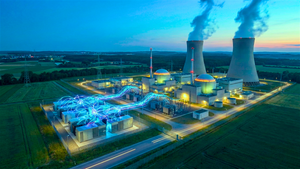
The global semiconductor landscape is undergoing a monumental transformation as the United States and Europe embark on ambitious, state-backed initiatives to revitalize their domestic chip manufacturing capabilities. Driven by the stark realities of supply chain vulnerabilities exposed during recent global crises and intensifying geopolitical competition, these strategic pushes aim to onshore or nearshore the production of these foundational technologies. This shift marks a decisive departure from decades of globally specialized manufacturing, signaling a new era where technological sovereignty and national security are paramount, fundamentally reshaping the future of artificial intelligence, defense, and economic power.
The US CHIPS and Science Act, enacted in August 2022, and the European Chips Act, which came into force in September 2023, are the cornerstones of this global re-industrialization effort. These legislative frameworks commit hundreds of billions of dollars and euros in subsidies, tax credits, and research funding to attract leading semiconductor firms and foster an indigenous ecosystem. The goal is clear: to reduce dependence on a highly concentrated East Asian manufacturing base, particularly Taiwan, and establish resilient, secure, and technologically advanced domestic supply chains that can withstand future disruptions and secure a competitive edge in the rapidly evolving digital world.
The Technical Crucible: Mastering Advanced Node Manufacturing
The aspiration to bring semiconductor manufacturing back home involves navigating an incredibly complex technical landscape, particularly when it comes to producing advanced chips at 5nm, 3nm, and even sub-3nm nodes. This endeavor requires overcoming significant hurdles in lithography, transistor architecture, material science, and integration.
At the heart of advanced chip fabrication is Extreme Ultraviolet (EUV) lithography. Pioneered by ASML (AMS: ASML), the Dutch tech giant and sole global supplier of EUV machines, this technology uses light with a minuscule 13.5 nm wavelength to etch patterns on silicon wafers with unprecedented precision. Producing chips at 7nm and below is impossible without EUV, and the transition to 5nm and 3nm nodes demands further advancements in EUV power source stability, illumination uniformity, and defect reduction. ASML is already developing next-generation High-NA EUV systems, capable of printing even finer features (8nm resolution), with the first systems delivered in late 2023 and high-volume manufacturing anticipated by 2025-2026. These machines, costing upwards of $400 million each, underscore the immense capital and technological barriers to entry.
Beyond lithography, chipmakers must contend with evolving transistor architectures. While FinFET (Fin Field-Effect Transistor) technology has served well for 5nm, its limitations in managing signal movement and current leakage necessitate a shift for 3nm. Companies like Samsung (KRX: 005930) are transitioning to Gate-All-Around (GAAFETs), such as nanosheet FETs, which offer better control over current leakage and improved performance. TSMC (NYSE: TSM) is also exploring similar advanced FinFET or nanosheet options. Integrating novel materials, ensuring atomic-scale reliability, and managing the immense cost of building and operating advanced fabs—which can exceed $15-20 billion—further compound the technical challenges.
The current initiatives represent a profound shift from previous approaches to semiconductor supply chains. For decades, the industry optimized for efficiency through global specialization, with design often in the US, manufacturing in Asia, and assembly elsewhere. This model, while cost-effective, proved fragile. The CHIPS Acts explicitly aim to reverse this by providing massive government subsidies and tax credits, directly incentivizing domestic manufacturing. This comprehensive approach also invests heavily in research and development, workforce training, and strengthening the entire semiconductor ecosystem, a holistic strategy that differs significantly from simply relying on market forces. Initial reactions from the semiconductor industry have been largely positive, evidenced by the surge in private investments, though concerns about talent shortages, the high cost of domestic production, and geopolitical restrictions (like those limiting advanced manufacturing expansion in China) remain.
Reshaping the Corporate Landscape: Winners, Losers, and Strategic Shifts
The governmental push for domestic semiconductor production is dramatically reshaping the competitive landscape for major chip manufacturers, tech giants, and even nascent AI startups. Billions in subsidies and tax incentives are driving unprecedented investments, leading to significant shifts in market positioning and strategic advantages.
Intel (NASDAQ: INTC) stands as a primary beneficiary, leveraging the US CHIPS Act to fuel its ambitious IDM 2.0 strategy, which includes becoming a major foundry service provider. Intel has received substantial federal grants, totaling billions, to support its manufacturing and advanced packaging operations across Arizona, New Mexico, Ohio, and Oregon, with a planned total investment exceeding $100 billion in the U.S. Similarly, its proposed €33 billion mega-fab in Magdeburg, Germany, aligns with the European Chips Act, positioning Intel to reclaim technological leadership and strengthen its advanced chip manufacturing presence in both regions. This strategic pivot allows Intel to directly compete with foundry leaders like TSMC and Samsung, albeit with the challenge of managing massive capital expenditures and ensuring sufficient demand for its new foundry services.
TSMC (NYSE: TSM), the undisputed leader in contract chipmaking, has committed over $65 billion to build three leading-edge fabs in Arizona, with plans for 2nm and more advanced production. This significant investment, partly funded by over $6 billion from the CHIPS Act, helps TSMC diversify its geographical production base, mitigating geopolitical risks associated with its concentration in Taiwan. While establishing facilities in the US entails higher operational costs, it strengthens customer relationships and provides a more secure supply chain for global tech companies. TSMC is also expanding into Europe with a joint venture in Dresden, Germany, signaling a global response to regional incentives. Similarly, Samsung (KRX: 005930) has secured billions under the CHIPS Act for its expansion in Central Texas, planning multiple new fabrication plants and an R&D fab, with total investments potentially exceeding $50 billion. This bolsters Samsung's foundry capabilities outside South Korea, enhancing its competitiveness in advanced chip manufacturing and packaging, particularly for the burgeoning AI chip market.
Equipment manufacturers like ASML (AMS: ASML) and Applied Materials (NASDAQ: AMAT) are indispensable enablers of this domestic production surge. ASML, with its monopoly on EUV lithography, benefits from increased demand for its cutting-edge machines, regardless of which foundry builds new fabs. Applied Materials, as the largest US producer of semiconductor manufacturing equipment, also sees a direct boost from new fab construction, with the CHIPS Act supporting its R&D initiatives like the "Materials-to-Fab" Center. However, these companies are also vulnerable to geopolitical tensions and export controls, which can disrupt their global sales and supply chains.
For tech giants like Apple (NASDAQ: AAPL), Google (NASDAQ: GOOGL), Amazon (NASDAQ: AMZN), and Microsoft (NASDAQ: MSFT), the primary benefit is enhanced supply chain resilience, reducing their dependency on overseas manufacturing and mitigating future chip shortages. While domestic production might lead to higher chip costs, the security of supply for advanced AI accelerators and other critical components is paramount for their AI development and cloud services. AI startups also stand to gain from better access to advanced chips and increased R&D funding, fostering innovation. However, they may face challenges from higher chip costs and potential market entry barriers, emphasizing reliance on cloud providers or strategic partnerships. The "guardrails" of the CHIPS Act, which prohibit funding recipients from expanding advanced manufacturing in countries of concern, also force companies to recalibrate their global strategies.
Beyond the Fab: Geopolitics, National Security, and Economic Reshaping
The strategic push for domestic semiconductor production extends far beyond factory walls, carrying profound wider significance for the global AI landscape, geopolitical stability, national security, and economic structures. These initiatives represent a fundamental re-evaluation of globalization in critical technology sectors.
At the core is the foundational importance of semiconductors for the broader AI landscape and trends. Advanced chips are the lifeblood of modern AI, providing the computational power necessary for training and deploying sophisticated models. By securing a stable domestic supply, the US and Europe aim to accelerate AI innovation, reduce bottlenecks, and maintain a competitive edge in a technology that is increasingly central to economic and military power. The CHIPS Act, with its additional $200 billion for AI, quantum computing, and robotics research, and the European Chips Act's focus on smaller, faster chips and advanced design, directly support the development of next-generation AI accelerators and neuromorphic designs, enabling more powerful and efficient AI applications across every sector.
Geopolitically, these acts are a direct response to the vulnerabilities exposed by the concentration of advanced chip manufacturing in East Asia, particularly Taiwan, a flashpoint for potential conflict. Reducing this reliance is a strategic imperative to mitigate catastrophic economic disruption and enhance "strategic autonomy" and sovereignty. The initiatives are explicitly aimed at countering the technological rise of China and strengthening the position of the US and EU in the global technology race. This "techno-nationalist" approach marks a significant departure from traditional liberal market policies and is already reshaping global value chains, with coordinated export controls on chip technology becoming a tool of foreign policy.
National security is a paramount driver. Semiconductors are integral to defense systems, critical infrastructure, and advanced military technologies. The US CHIPS Act directly addresses the vulnerability of the U.S. military supply chain, which relies heavily on foreign-produced microchips for advanced weapons systems. Domestic production ensures a resilient supply chain for defense applications, guarding against disruptions and risks of tampering. The European Chips Act similarly emphasizes securing supply chains for national security and economic independence.
Economically, the projected impacts are substantial. The US CHIPS Act, with its roughly $280 billion allocation, is expected to create tens of thousands of high-paying jobs and support millions more, aiming to triple US manufacturing capacity and reduce the semiconductor trade deficit. The European Chips Act, with its €43 billion investment, targets similar benefits, including job creation, regional economic development, and increased resilience. However, these benefits come with challenges: the immense cost of building state-of-the-art fabs (averaging $10 billion per facility), significant labor shortages (a projected shortfall of 67,000 skilled workers in the US by 2030), and higher manufacturing costs compared to Asia.
Potential concerns include the risk of trade wars and market distortion. The substantial subsidies have drawn criticism for adopting policies similar to those the US has accused China of using. China has already initiated a WTO dispute over US sanctions related to the CHIPS Act. Such protectionist measures could trigger retaliatory actions, harming global trade. Moreover, government intervention through subsidies risks distorting market dynamics, potentially leading to oversupply or inefficient resource allocation if not carefully managed.
Comparing this to previous technological shifts, semiconductors are the "brains of modern electronics" and the "fundamental building blocks of our digital world," akin to the transformative impact of the steam engine, electricity, or the internet. Just as nations once sought control over coal, oil, or steel, the ability to design and manufacture advanced semiconductors is now seen as paramount for economic competitiveness, national security, and technological leadership in the 21st century.
The Road Ahead: Innovation, Integration, and Geopolitical Tensions
The domestic semiconductor production initiatives in the US and Europe are setting the stage for significant near-term and long-term developments, characterized by continuous technological evolution, new applications, and persistent challenges. Experts predict a dynamic future for an industry central to global progress.
In the near term, the focus will be on the continued acceleration of regionalization and reshoring efforts, driven by the substantial governmental investments. We can expect to see more groundbreaking announcements of new fab constructions and expansions, with companies like TSMC (NYSE: TSM) and Intel (NASDAQ: INTC) aiming for volume production of 2nm nodes by late 2025. The coming months will be critical for the allocation of remaining CHIPS Act funds and the initial operationalization of newly built facilities, testing the efficacy of these massive investments.
Long-term developments will be dominated by pushing the boundaries of miniaturization and integration. While traditional transistor scaling is reaching physical limits, innovations like Gate-All-Around (GAA) transistors and the exploration of new materials such as 2D materials (e.g., graphene), Gallium Nitride (GaN), and Silicon Carbide (SiC) will define the "Angstrom Era" of chipmaking. Advanced packaging is emerging as a critical avenue for performance enhancement, involving heterogeneous integration, 2.5D and 3D stacking, and hybrid bonding techniques. These advancements will enable more powerful, energy-efficient, and customized chips.
These technological leaps will unlock a vast array of new potential applications and use cases. AI and Machine Learning (AI/ML) acceleration will see specialized generative AI chips transforming how AI models are trained and deployed, enabling faster processing for large language models and real-time AI services. Autonomous vehicles will benefit from advanced sensor integration and real-time data processing. The Internet of Things (IoT) will proliferate with low-power, high-performance chips enabling seamless connectivity and edge AI. Furthermore, advanced semiconductors are crucial for 5G and future 6G networks, high-performance computing (HPC), advanced healthcare devices, space exploration, and more efficient energy systems.
However, significant challenges remain. The critical workforce shortage—from construction workers to highly skilled engineers and technicians—is a global concern that could hinder the ambitious timelines. High manufacturing costs in the US and Europe, up to 35% higher than in Asia, present a long-term economic hurdle, despite initial subsidies. Geopolitical factors, including ongoing trade wars, export restrictions, and competition for attracting chip companies, will continue to shape global strategies and potentially slow innovation if resources are diverted to duplicative infrastructure. Environmental concerns regarding the immense power demands of AI-driven data centers and the use of harmful chemicals in chip production also need innovative solutions.
Experts predict the semiconductor industry will reach $1 trillion in global sales by 2030, with the AI chip market alone exceeding $150 billion in 2025. A shift towards chiplet-based architectures from monolithic chips is anticipated, driving customization. While the industry will become more global, regionalization and reshoring efforts will continue to reshape manufacturing footprints. Geopolitical tensions are expected to remain a dominant factor, influencing policies and investments. Sustained commitment, particularly through the extension of investment tax credits, is considered crucial for maintaining domestic growth.
A Foundational Shift: Securing the Digital Future
The global push for domestic semiconductor production represents one of the most significant industrial policy shifts of the 21st century. It is a decisive acknowledgment that semiconductors are not merely components but the fundamental building blocks of modern society, underpinning everything from national security to the future of artificial intelligence.
The key takeaway is that the era of purely optimized, globally specialized semiconductor supply chains, driven solely by cost efficiency, is giving way to a new paradigm prioritizing resilience, security, and technological sovereignty. The US CHIPS Act and European Chips Act are not just economic stimuli; they are strategic investments in national power and future innovation. Their success will be measured not only in the number of fabs built but in the robustness of the ecosystems they foster, the talent they cultivate, and their ability to withstand the inevitable geopolitical and economic pressures.
This development holds immense significance for the history of AI. By securing a stable and advanced supply of computational power, these initiatives lay the essential hardware foundation for the next generation of AI breakthroughs. Without cutting-edge chips, the most advanced AI models cannot be trained or deployed efficiently. Therefore, these semiconductor policies are intrinsically linked to the future pace and direction of AI innovation.
In the long term, the impact will be a more diversified and resilient global semiconductor industry, albeit one potentially characterized by higher costs and increased regional competition. The coming weeks and months will be crucial for observing the initial outputs from new fabs, the success in attracting and training the necessary workforce, and how geopolitical dynamics continue to influence investment decisions and supply chain strategies. The world is watching as nations vie for control over the very silicon that powers our digital future.
This content is intended for informational purposes only and represents analysis of current AI developments.
TokenRing AI delivers enterprise-grade solutions for multi-agent AI workflow orchestration, AI-powered development tools, and seamless remote collaboration platforms.
For more information, visit https://www.tokenring.ai/.





